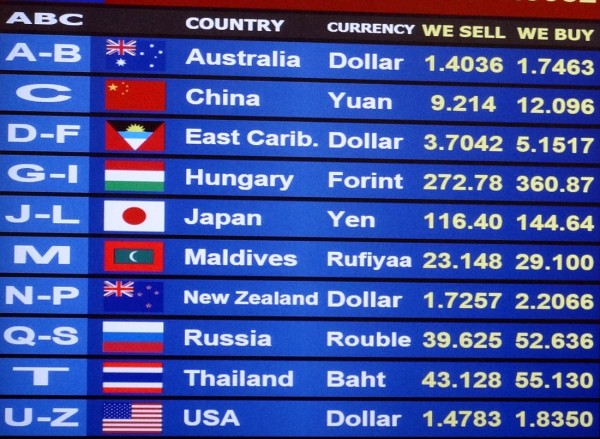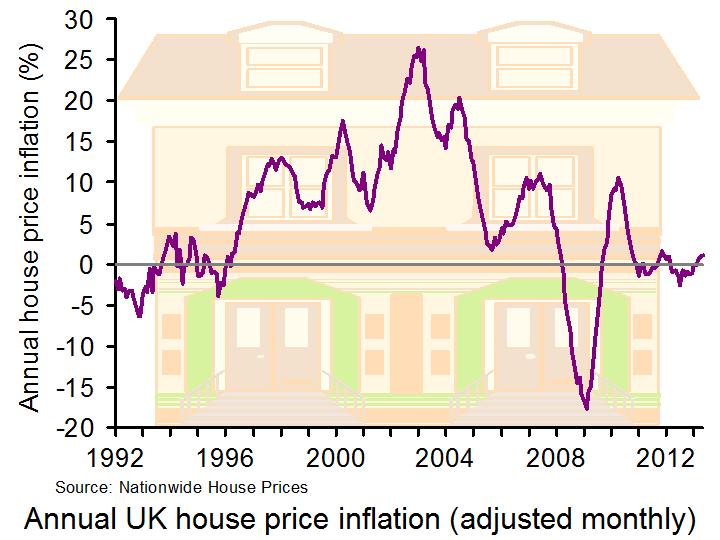 John Nash was one of the pioneers of game theory and in 1994 was awarded the Nobel prize in economics for his work in this field. He was also the subject of the 2001 film, A beautiful mind, where the young John Nash was played by Russell Crowe, for which he won an Oscar.
John Nash was one of the pioneers of game theory and in 1994 was awarded the Nobel prize in economics for his work in this field. He was also the subject of the 2001 film, A beautiful mind, where the young John Nash was played by Russell Crowe, for which he won an Oscar.
Tragically, John Nash and his wife were killed in a car crash on May 23: he was 86 years old. Since his death there have been many tributes paid to him and his work.
As a student of economics you will almost certainly have studied the concept of a Nash equilibrium: a situation where everyone makes their best choice, given the choices of the other ‘players’ in a ‘game’. But a Nash equilibrium is not in the collective best interests of the participants in a non-cooperative game.
This is a very different concept of equilibrium from the simple equilibrium in a perfectly competitive market. In fact, in the complex world of strategic decision making, where firms are constantly looking at their rivals’ behaviour and possible reactions to their own behaviour, there are all sorts of Nash equilibria which are clearly sub-optimal. Competition may be highly destructive.
The following obituaries look at Nash’s contribution to the development of economics. As the Bloomberg article states:
The game theory concepts that Nash’s math[s] brought to the field were a true paradigm shift in economics. Macroeconomists, who continue to use the old Walrasian notion of equilibrium typically engage in hand-waving about how the macroeconomy is too big for strategic interactions to matter. But most of the economics profession has gradually shifted toward Nash equilibrium. The 2014 Nobel winner, Jean Tirole, is emblematic of the new economics. And many of the biggest successes in applied economics, like the auctions that power Google’s advertising, rely on Nash’s technique.
Do we owe him as much as Adam Smith?
Articles
Death of John Nash and His Beautiful Ideas Bloomberg, Noah Smith (26/5/15)
John Nash, economist and mathematician, 1928–2015 Financial Times, Ferdinando Giugliano (25/5/15)
Obituary: John Nash: Lost and found The Economist (28/5/15)
Remembering John Nash: Finding equations to explain the world The Economist (28/5/15)
John F. Nash Jr., Math Genius Defined by a ‘Beautiful Mind,’ Dies at 86 New York Times, Erica Goode (24/5/15)
Explaining a Cornerstone of Game Theory: John Nash’s Equilibrium New York Times, Kenneth Chang (24/5/15)
John Nash’s Indelible Contribution To Economic Analysis Forbes, Jon Hartley (25/5/15)
John Nash’s ground-breaking contributions to maths BBC News, John Moriarty (24/5/15)
From the archives: Nash’s Nobel prize The Economist (24/5/15)
 A beautiful strategy: John Nash’s ‘game theory’ explained Hindustan Times, Gaurav Choudhury (25/5/15)
A beautiful strategy: John Nash’s ‘game theory’ explained Hindustan Times, Gaurav Choudhury (25/5/15)
Interview with John Nash
 Interview with John Nash Nobelprize.org (Sept 2004)
Interview with John Nash Nobelprize.org (Sept 2004)
Questions
- What is meant by the ‘prisoners’ dilemma’? How is this a demonstration of a sub-optimal Nash equilibrium in a non-cooperative game?
- Why is it difficult to predict the outcome of a non-cooperative game?
- Give some examples of non-cooperative games played by companies competing with each other.
- Give some examples of non-cooperative games played by nations competing with each other.
- Why do competition authorities try to prevent cooperation between businesses?
- Why may a cooperative equilibrium between firms be an unstable one?
 With an election approaching in the UK, uncertainty is a term we will hear frequently over the next few weeks. Until we know which party or parties will be in power and hence which policies will be implemented, planning anything is difficult. This is just one of the factors that has caused the British pound sterling to fall last week by 2% to an almost five year low against the dollar.
With an election approaching in the UK, uncertainty is a term we will hear frequently over the next few weeks. Until we know which party or parties will be in power and hence which policies will be implemented, planning anything is difficult. This is just one of the factors that has caused the British pound sterling to fall last week by 2% to an almost five year low against the dollar.
In the last election, uncertainty also prevailed and continued even after the election before the Coalition was formed. Given how close this election appears to be at present, another Coalition may have to be formed and this is adding to the current election uncertainty. A currency strategist at Standard Bank said:
“A $1.40 level for sterling/dollar is certainly not out of reach if the election aftermath turns ugly”
With such uncertainty, investors are refraining from putting their money into the UK and this has contributed towards the deprecation of the British pound against the dollar.
Another factor adding to this downward pressure on the pound is the latest data on industrial output. Although economic growth figures for the UK in 2014 were very positive, there are some suggestions that 2015 will not be as good as expected, though still a strong performance. The first quarter data will not be available until just before the election, but data from the ONS on industrial output shows very minimal growth at just 0.1% from January to February. Chris Williams at Markit said:
“Clearly this all bodes ill for economic growth in the opening quarter of the year. It’s now looking like the economy slowed, and possibly quite markedly, compared to the 0.6% expansion seen in the closing quarter of 2014 … The trend should improve in March, however, according to survey data.”
These two factors have combined to push the pound down, with investors preferring to hold their money in dollars, despite the weak US unemployment data. However, it is not only against the dollar that we must consider sterling’s performance. Against the euro, it has performed better, rising by 1.5%. Whether this is positive for the UK or very negative for the Eurozone is another question. The following articles consider the performance of the British pound.
Sterling falls to five-year low Financial Times, Neil Dennis (10/4/15)
Sterling plummets to five year low as economic slowdown looms The Telegraph, Mehreen Khan (10/4/15)
Pound at five-year low against dollar on weak output BBC News (10/4/15)
Sterling falls after Bank of England’s Haldane says even chances of rate cut or rise Reuters (10/4/15)
Pound falls to five-year low as volatility jumps before election Bloomberg, Anooja Debnath and David Goodman (11/4/15)
Pound falls to a five-year low against the dollar as polls suggest election will create economic uncertainty Mail Online, Matt Chorley (10/4/15)
Questions
- Draw a diagram illustrating the way in which the $/£ exchange rate is determined.
- Explain why the election is causing economic uncertainty in the UK.
- How would uncertainty affect the demand and supply of sterling and hence the exchange rate?
- US job data is worse than expected. Shouldn’t this have caused the dollar to depreciate against the pound and not appreciate?
- Industrial output data for the UK economy is lower than expected. What has caused this?
- Why does slower growth in industrial output cause the exchange rate to depreciate?
- In order to keep the UK’s inflation rate on target, Haldane has said that we could expect a cut or rise in interest rates and policy should be prepared for both. How has this affected the exchange rate?
- Are there any advantages of having a lower pound?
 The model of demand and supply is one of the first diagrams that any student of Economics will see and it’s a very important model. We can apply it to a multitude of markets and understand how market prices for products and services are determined. One such market is that of wine, where a recent report suggests that wine is in short supply. Bad news for everyone!
The model of demand and supply is one of the first diagrams that any student of Economics will see and it’s a very important model. We can apply it to a multitude of markets and understand how market prices for products and services are determined. One such market is that of wine, where a recent report suggests that wine is in short supply. Bad news for everyone!
The price of wine is set by the interact of demand and supply. As with any market, numerous factors will affect how much wine is demanded at any price. Since 1996, global consumption of wine has been on the increase: for many, wine is a luxury good and thus as income rises, so does consumption. With the emergence of markets, such as China and subsequent income growth, consumption has risen. Furthermore, tastes have changed such that wine is becoming an increasingly desirable drink. So, this has all led to the demand curve shifting to the right.
 However, at the same time, the supply of wine has been falling, largely the result of ‘ongoing vine pull and poor weather’ across Europe. European production has fallen by around 10% over the past year and although production in other countries has been rising, overall production is still not sufficient to match the growth in demand.
However, at the same time, the supply of wine has been falling, largely the result of ‘ongoing vine pull and poor weather’ across Europe. European production has fallen by around 10% over the past year and although production in other countries has been rising, overall production is still not sufficient to match the growth in demand.
So, what’s the result of this high growth in demand combined with the decline in supply? A shortage of wine. A report by analysts at Morgan Stanley suggests that the global wine shortage was some 300m cases in 2012. But, more importantly what is the effect of this shortage? When demand for a product exceeds the supply, the market mechanism will push up the price. As stocks of wine continue to be depleted and consumption of wine keeps rising, the only outcome is a rise in the price of a bottle and a crate of wine.
Concerns are also being raised about the future of prices of some of our other favourite luxury products, such as chocolate, goats cheese and olives. In each case, it’s all about demand and supply and how these curves interact with each other. The following articles consider the prices of some of these products.
Wine shortage: the top five wines to drink – before they run out The Telegraph, Susy Atkins (30/10/13)
World faces global wine shortage – report BBC News (30/10/13)
Luxury food shortage scares – should we believe the warnings? The Guardian, Emine Saner (5/11/13)
The global wine ‘shortage’ Napa Valley, Dan Berger (8/11/13)
Global Shortage of wine beckons Independent, Felicitiy Morse (30/10/13)
The global wine shortage is about to get worse (if you like Bordeaux) TIME World, David Stout (6/11/13)
Have no fears about a world wine shortage – the glass is still half fulll The Telegraph, Victoria Moore (31/10/13)
Drink it while you can, as study points to looming wine shortage Associated Press (31/10/13)
Don’t waste a drop! Wine prices to rise as demand grows Mail Online, Amie Keeley (31/10/13)
Questions
- Use a demand and supply diagram to illustrate how the market price for wine (or any other product) is determined.
- Why does the demand curve for wine slope downwards and the supply curve of wine slope upwards?
- Which factors will affect (a) the demand and (b) the supply of wine?
- One the diagram you drew in question, illustrate a shortage of wine. How will the price mechanism work to restore equilibrium?
- Why does the Morgan Stanley report suggest that a wine shortage might emerge?
- What suggestions are there that there is no wine shortage?
 Demand and supply analysis can be applied to a multitude of markets. When there is a disequilibrium in a market, prices will tend to adjust to eliminate any shortage or surplus. But, what of road space? There is a demand and a supply of road space and when there are too many cars for the road space available, congestion is the consequence.
Demand and supply analysis can be applied to a multitude of markets. When there is a disequilibrium in a market, prices will tend to adjust to eliminate any shortage or surplus. But, what of road space? There is a demand and a supply of road space and when there are too many cars for the road space available, congestion is the consequence.
When an additional car enters the road network, there is a cost and a benefit to the driver. However, there are not only costs/benefits to the driver, but there are also costs/benefits to other road-users. When one car drives on the M25 it adds to the number of cars on the road. Once we reach the point where there are too many cars given the road space and thus the flow of cars per minute begins to fall, congestion starts to build up. There is a negative externality involved here – the actions of one person (the driver) impose an additional cost on other drivers (the congestion). It takes every other road user a little bit of extra time to get from A to B the more cars there are on the road.
Congestion is a problem in many parts of the country and various solutions have been suggested. Policies to reduce demand will help the congestion problem by reducing the number of cars on the road. Numerous strategies have been tried, such as restrictions on parking; improvements in public transport; an integrated transport policy; higher parking charges; work place parking levies; higher taxes on petrol, higher car taxes and congestion charging schemes.
 Alternatively, building more roads will directly increase the supply of road space, but this can (and has) simply led to more cars using the additional road space and thus the problem of congestion remains. Bus/taxi lanes are in use across the country and allow the users of public transport to benefit from faster journey times, thus encouraging them to forgo their cars and use buses. However, does this add to the congestion for other people?
Alternatively, building more roads will directly increase the supply of road space, but this can (and has) simply led to more cars using the additional road space and thus the problem of congestion remains. Bus/taxi lanes are in use across the country and allow the users of public transport to benefit from faster journey times, thus encouraging them to forgo their cars and use buses. However, does this add to the congestion for other people?
In Liverpool, a nine month trial is taking place, where bus lanes will be removed to find out if they have a positive effect on reducing congestion. By increasing the amount of road space available to all road users, Liverpool City Council will be able to see if directly increasing the supply of road space will help to meet the existing demand. The possibility, however, is that by increasing the supply of road space, more individuals will choose to use their cars, thus fuelling demand. Many argue that this trial is a step backwards and will add to congestion, reduce the appeal of travelling by bus and impose further costs on the environment. The following articles consider the debate surrounding congestion.
Liverpool City Council will scrap bus lanes for nine months BBC News (27/9/13)
Liverpool bus lanes plan criticised by government Liverpool Daily Post (9/10/13)
Calls for single 30% income tax rate BBC News (21/5/12)
Liverpool scraps bus lanes in trial BBC News (including video) (21/10/13)
Government warning over Liverpool council plans to axe bus lanes in the city Liverpool Echo (9/10/13)
Questions
- Explain why congestion is a negative externality. What other externalities exist with regard to car usage?
- Using a diagram, show the point at which congestion occurs and explain why there is a difference between the marginal private and marginal social cost.
- What will happen to the difference between the marginal private and social cost curves before and after congestion sets in?
- Think about the different solutions to the problem of congestion. In each case, explain whether it is a demand-side or supply-side solution and how it will aim to combat congestion. You should also consider whether it is a short or long term solution and how feasible it actually is.
- How will the abolition of bus lanes aim to reduce congestion?
- There are supporters for bus lanes and supporters for the abolition of them. Justify the arguments on each side of the debate. You should consider the wider implications as well as the impact on congestion.
 The strength of the housing market is often a key indicator of the strength of the economy. But, the opposite is also true: a weak economy often filters through to create a weak housing market. With the current weak economy, a boost in confidence is needed and signs suggest that the housing market is beginning to recover.
The strength of the housing market is often a key indicator of the strength of the economy. But, the opposite is also true: a weak economy often filters through to create a weak housing market. With the current weak economy, a boost in confidence is needed and signs suggest that the housing market is beginning to recover.
While the picture of the housing market today is nothing like the pre-crisis view, things are beginning to look up. For a couple of years now, house price inflation in the UK has been very close, if not equal to zero. However, data from Nationwide Building Society suggests that in May, house prices rose by 0.4% and the once stagnant year-on-year change in house prices rose to 1.1% (see chart below: click here for a PowerPoint of the chart). This is the fastest it has grown since the end of 2011.
Commentators have suggested that this latest data is an indication that ‘the market is gaining momentum’. A further confirmation of this rejuvenated market came with the data that property sales were 5% up each month this year, than the average monthly level for 2012. Despite this improvement, they still remain well below the pre-crisis levels.
 Which factors have contributed to this tentative recovery? Most households require a mortgage to purchase a house and, given the central role that the housing market played in the financial crisis with companies engaging in excessive lending as a means of expanding their mortgage books, the availability of mortgages fell. The number of mortgage approvals is likely to feed through to affect the number of house sales and these have improved in the first few months of 2013. Interest rates offered by lenders have also fallen, making mortgages more affordable, thus boosting demand. Furthermore, government assistance is available to help individuals put a deposit down on a house, by offering them an equity loan. Further measures are due to come into effect in January 2014, with the aim of providing a further boost to the housing market. The chief economist at Nationwide, Robert Gardner said:
Which factors have contributed to this tentative recovery? Most households require a mortgage to purchase a house and, given the central role that the housing market played in the financial crisis with companies engaging in excessive lending as a means of expanding their mortgage books, the availability of mortgages fell. The number of mortgage approvals is likely to feed through to affect the number of house sales and these have improved in the first few months of 2013. Interest rates offered by lenders have also fallen, making mortgages more affordable, thus boosting demand. Furthermore, government assistance is available to help individuals put a deposit down on a house, by offering them an equity loan. Further measures are due to come into effect in January 2014, with the aim of providing a further boost to the housing market. The chief economist at Nationwide, Robert Gardner said:
Widespread expectations that the economy will continue to recover gradually in the quarters ahead, that interest rates will remain low, and the ongoing impact of policy measures aimed at supporting the availability and lowering the cost of credit all provide reasons for optimism that activity will continue to gain momentum in the quarters ahead.
Despite the optimism, the situation is different across the UK, with some areas benefiting more than others. London and the South-East are driving this 0.4% rise, whereas other areas may be in need of further assistance to keep pace (see The UK housing market: good in parts).
Although these latest data may be a sign of things to come, it is also possible that things could go the opposite way. Incomes remain low; employment data are hardly encouraging; and the spectre of inflation is always there. Perhaps most importantly, consumer confidence remains fragile and until that gains momentum, uncertainty will continue to plague the UK marketplace. The following articles consider this issue.
Articles
UK house prices again up in May, says Nationwide The Guardian, Hilary Osborne (30/5/13)
Housing market could boost retail industry, Kingfisher says The Telegraph, Graham Ruddick (30/5/13)
UK house prices see modest rise, says Nationwide BBC News (30/5/13)
 Hugh’s Review: House prices in spotlight BBC News, Hugh Pym with Yolande Barnes of Savills and Matthew Pointon of Capital Economics (31/5/13)
Hugh’s Review: House prices in spotlight BBC News, Hugh Pym with Yolande Barnes of Savills and Matthew Pointon of Capital Economics (31/5/13)
House prices are racing ahead as stimulus for the market kicks in Independent, Russell Lynch (31/5/13)
’Pick up’ in house prices recorded in sign of market confidence, says Nationwide Independent, Vicky Shaw (30/5/13)
House prices at highest level for nearly two years as confidence in UK economy grows and mortgages get cheaper This is Money, Matt West (30/5/13)
Stamp duty is ‘choking’ housing market as it rises seven times faster than inflation over last 15 years Mail Online, Tara Brady (28/5/13)
Nationwide launches Help to Buy mortgages The Telegraph, William Clarke (29/5/13)
UK home prices rise most in 18 months, Nationwide says Bloomberg, Jennifer Ryan (30/5/13)
House price data
Links to house price data The Economics Network
Statistical data set – Property transactions Department of Communities and Local Government
Nationwide house price index Nationwide Building Society
Halifax House Price Index Lloyds Banking Group
Lending to individuals – November 2012 Bank of England
Questions
- How is the equilibrium determined in the housing market? Using a demand and supply diagram, illustrate the equilibrium. Make sure you think about the shapes of the curves you’re drawing.
- Which factors affect the demand for and supply of housing?
- Why are there regional variations in house prices?
- Why is the housing market a good indicator of the strength of the economy?
- Why have house prices risen throughout 2013? Is the trend likely to continue?
- If the housing market does indeed gain momentum, how might this affect the rest of the economy? Which sectors in particular are likely to benefit?
- Explain why the government’s intervention in the housing market could be seen to have a multiplier effect?
- Concerns have been raised that the government’s schemes to help the housing market may create a house price bubble. Why might this be the case?
 John Nash was one of the pioneers of game theory and in 1994 was awarded the Nobel prize in economics for his work in this field. He was also the subject of the 2001 film, A beautiful mind, where the young John Nash was played by Russell Crowe, for which he won an Oscar.
John Nash was one of the pioneers of game theory and in 1994 was awarded the Nobel prize in economics for his work in this field. He was also the subject of the 2001 film, A beautiful mind, where the young John Nash was played by Russell Crowe, for which he won an Oscar. A beautiful strategy: John Nash’s ‘game theory’ explained Hindustan Times, Gaurav Choudhury (25/5/15)
A beautiful strategy: John Nash’s ‘game theory’ explained Hindustan Times, Gaurav Choudhury (25/5/15) Interview with John Nash Nobelprize.org (Sept 2004)
Interview with John Nash Nobelprize.org (Sept 2004)





